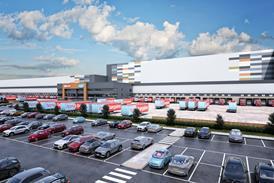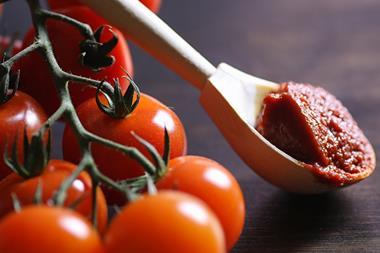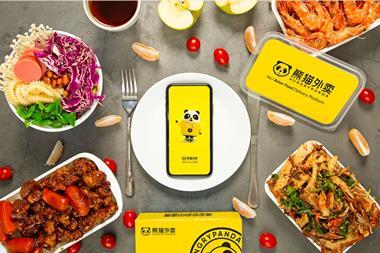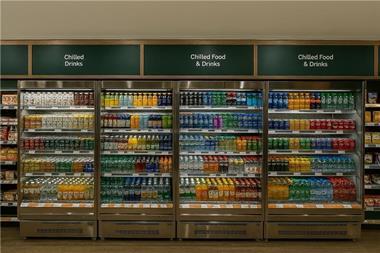Tesco has negotiated factory gate pricing contracts with more than 1,000 suppliers making up 55% of its volumes.
Distribution director John Boulter said he was confident of substantial progress in 2004.
He dismissed suggestions Tesco had scored easy wins on chilled and frozen - “the low hanging fruit” - but had been slower to get ambient suppliers on board.
“There was a lot of reluctance from suppliers in the early days
because we weren’t clear about what we were trying to achieve, and that’s control and visibility,” said Boulter.
“But I don’t think anyone is blanket opposed. Agreed, we cannot necessarily undercut a big, efficient supplier delivering into us on full truckloads and then using the return journey to pick up raw materials. But it’s not just about saving money - it’s about visibility.”
Merging the primary and secondary logistics teams at HQ had helped integrate store deliveries and supplier collections, he said.
“We are using the secondary fleet extensively for primary distribution, but we are not yet where we want to be on integration,” said Boulter.
The leading supermarkets were all engaged in some form of factory gate pricing.
However, retailers said negotiations continued to be thwarted by some suppliers’ inability to demonstrate how much it cost to serve individual retail accounts.
Waitrose manager, distribution projects, Melissa Wells, said both sides had to move cautiously in order to avoid getting their fingers burnt.
“Suppliers and retailers need to work together to ensure an accurate cost to serve the retailer is identified at the outset.”
At Waitrose, the mantra was transport optimisation.
“We have been doing factory gate pricing with a couple of ambient suppliers in the last few months. But we are also stepping up backhauling, exploring consolidation with third party logistics companies and using suppliers to deliver to stores.
“The priority is finding mutually agreed solutions delivering clear benefits for both us and our suppliers.”
Safeway has also done some factory gate pricing on chilled, fresh and wine, but was focusing on backhauling, consolidation centres and using suppliers for store deliveries, said supply chain director Mark Aylwin.
“It’s about giving suppliers a menu of options - getting more efficient use of vehicles, not driving everything through the commercial teams.”
>>p32 Past a point of no return
Elaine Watson
Distribution director John Boulter said he was confident of substantial progress in 2004.
He dismissed suggestions Tesco had scored easy wins on chilled and frozen - “the low hanging fruit” - but had been slower to get ambient suppliers on board.
“There was a lot of reluctance from suppliers in the early days
because we weren’t clear about what we were trying to achieve, and that’s control and visibility,” said Boulter.
“But I don’t think anyone is blanket opposed. Agreed, we cannot necessarily undercut a big, efficient supplier delivering into us on full truckloads and then using the return journey to pick up raw materials. But it’s not just about saving money - it’s about visibility.”
Merging the primary and secondary logistics teams at HQ had helped integrate store deliveries and supplier collections, he said.
“We are using the secondary fleet extensively for primary distribution, but we are not yet where we want to be on integration,” said Boulter.
The leading supermarkets were all engaged in some form of factory gate pricing.
However, retailers said negotiations continued to be thwarted by some suppliers’ inability to demonstrate how much it cost to serve individual retail accounts.
Waitrose manager, distribution projects, Melissa Wells, said both sides had to move cautiously in order to avoid getting their fingers burnt.
“Suppliers and retailers need to work together to ensure an accurate cost to serve the retailer is identified at the outset.”
At Waitrose, the mantra was transport optimisation.
“We have been doing factory gate pricing with a couple of ambient suppliers in the last few months. But we are also stepping up backhauling, exploring consolidation with third party logistics companies and using suppliers to deliver to stores.
“The priority is finding mutually agreed solutions delivering clear benefits for both us and our suppliers.”
Safeway has also done some factory gate pricing on chilled, fresh and wine, but was focusing on backhauling, consolidation centres and using suppliers for store deliveries, said supply chain director Mark Aylwin.
“It’s about giving suppliers a menu of options - getting more efficient use of vehicles, not driving everything through the commercial teams.”
>>p32 Past a point of no return
Elaine Watson


















No comments yet